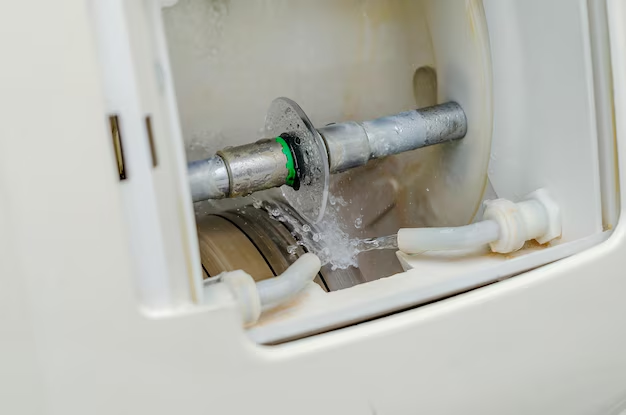Understanding the Refrigerator Water Line: What You Need to Know
When considering the efficient functionality of a kitchen, the refrigerator water line plays a subtle yet crucial role. Often overlooked, this component ensures a steady supply of water to your refrigerator for ice-making and water-dispensing purposes. But for many, the first question that arises is: What does a refrigerator water line look like? This guide will unravel this mystery and provide a comprehensive understanding of its appearance, purpose, installation procedures, and maintenance tips.
The Anatomy of a Refrigerator Water Line
What Exactly Is a Refrigerator Water Line?
A refrigerator water line is a small direct water supply line that connects your refrigerator to your home's plumbing system. Its primary function is to supply water to the ice maker and the water dispenser, ensuring that these features have a continuous flow of fresh water.
Visual Characteristics
Typically, a refrigerator water line appears as a flexible tube. Here are some key attributes of what you might see:
- Material: Most water lines are made of plastic (often polyethylene) or braided stainless steel. Plastic lines are typically clear or milky white, while stainless steel lines have a distinct metallic appearance.
- Diameter: These lines are thin, often measuring about 1/4 inch in diameter.
- Length: The length varies based on distance requirements but is generally a few feet long to allow flexibility in connection.
Types of Refrigerator Water Lines
There are primarily two types you might encounter:
- Plastic Water Lines: These are cost-effective and flexible, making them easy to install. However, they can be susceptible to kinks and damage over time.
- Stainless Steel Braided Lines: A more durable option, these lines are less prone to leaks and damage, making them ideal for long-term use.
The Importance of a Refrigerator Water Line
Benefits in Modern Refrigeration
The installation of a refrigerator water line enhances the utility of your fridge. Here’s why:
- Convenience: It provides instant access to cold water and ice, enhancing the functionality of your kitchen.
- Efficiency: Having a dedicated water line ensures your refrigerator’s ice maker and dispenser work more efficiently.
Environmental and Cost Considerations
Using a water line-equipped refrigerator can also have environmental and financial benefits:
- Reduced Bottle Use: By providing a consistent source of drinking water, fewer bottled water purchases are necessary.
- Energy Savings: Efficient operation of ice makers and water dispensers can contribute to overall reduced energy consumption.
Installing a Refrigerator Water Line
Key Steps in the Installation Process
While specific installation steps can vary depending on your refrigerator model and home plumbing setup, here’s a general overview:
- Locate the Nearest Water Source: Typically, this would be under your sink or any accessible area with a cold water pipe.
- Turn Off the Water Supply: Ensure safety by turning off the water supply to prevent leaks.
- Attach the Saddle Valve: This device clamps onto an existing water pipe to allow easy access to water for the line.
- Connect the Water Line: Attach one end to the saddle valve and the other to your refrigerator’s water inlet.
- Test for Leaks: Once connected, turn the water supply back on and check for any leaks in the system.
Professional vs. DIY Installation
While DIY installation is possible with the right tools and skills, a professional can ensure a secure and leak-free connection. Factors like accessibility and familiarity with plumbing may influence your choice.
Maintenance and Troubleshooting
Tips for Keeping Your Water Line in Top Condition
Regular maintenance of your water line can prevent common issues:
- Regular Inspections: Periodically check for any kinks, leaks, or signs of wear.
- Filter Replacements: If your refrigerator has a water filter, replacing it regularly ensures water quality and system efficiency.
Common Issues and Solutions
Knowing common problems that can occur may help you troubleshoot effectively:
- Leaking: Usually due to loose connections or worn hoses. Tighten fittings or replace damaged sections.
- Reduced Water Flow: This could be due to a clogged filter or kinked lines.
- No Ice Production: Often linked to water supply issues, ensuring proper connection and flow is key.
Enhancing Kitchen Design with Water Line Considerations
Incorporating Water Line Installations Seamlessly
Proper planning around refrigerator placement and water line installation can impact kitchen aesthetics and functionality. Here are some considerations:
- Hidden Installs: Wherever feasible, hide lines within cabinetry or walls to maintain a clean look.
- Effective Utilization of Space: Ensure that positioning of the refrigerator and its connections maximize kitchen layout efficiency.
Innovations and Future Considerations
Modern refrigerators and their components continue to evolve, so staying informed about new technologies for water lines, such as advanced filtration systems and smart diagnostics, could enhance the functionality and convenience of your kitchen appliances.
Summary of Key Takeaways
Here is a quick recap of what you should consider when dealing with refrigerator water lines:
- Materials Matter: Choose between plastic for ease and cost or stainless steel for durability.
- DIY or Professional: Assess your skill level and comfort with plumbing before deciding.
- Maintenance Is Essential: Regular checks and proper care can prevent leaks and prolong the lifespan of your water line.
- Plan Wisely: Proper planning of water lines can enhance kitchen design and functionality.
Discovering what a refrigerator water line looks like and understanding its role can greatly enhance how you interact with and maintain your kitchen appliances. Whether installing a new line or maintaining an existing system, informed choices foster better appliance performance and ultimately a more efficient home. By embracing this knowledge, you'll ensure your refrigerator and its features work seamlessly, contributing to a convenient and modern kitchen experience.
